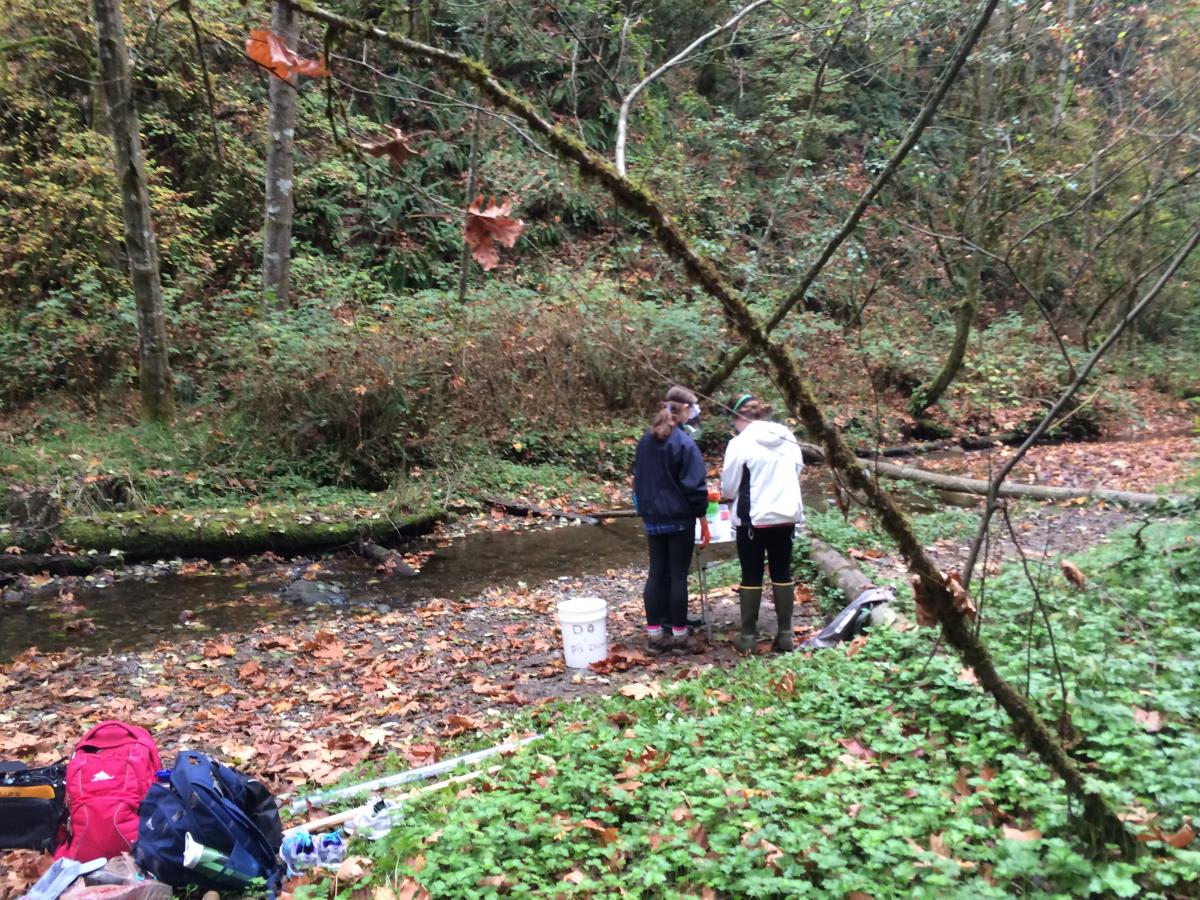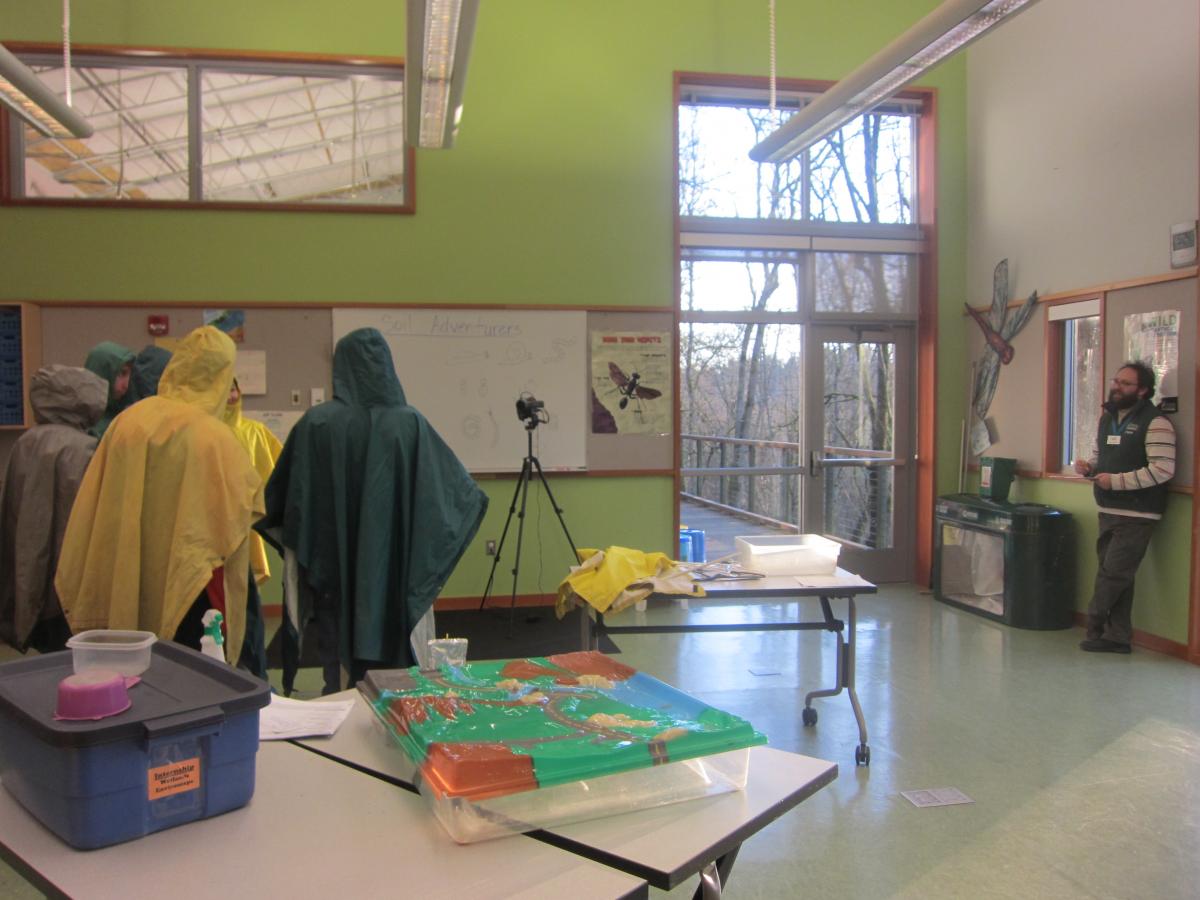Badges for College Credit
Co-authored with Carrie Tzou
The Badges for College Credit (BCC) project (NSF AISL DRL-1322512) is a four-year project that connects informal science learning with higher education by designing badge systems that recognize informal science learning in the form of college credit at the University of Washington Bothell (UWB). The project is a collaboration between the University of Washington Bothell’s OpenSTEM Research, the Pacific Science Center, the Future of Flight, the Seattle Aquarium, and iRemix. In this project, informal science institutions partner with UWB faculty to co-design a college course that is then run in the informal setting and awarded credit by the UWB faculty member. In the process, these design teams discuss and agree on important learning goals that are consistent with the informal program goals and with college-level work. The resulting badge systems reflect scientific and professional practices and reflect the culture and social activity of the programs.
Badge systems are emerging, especially in the realm of digital learning, as tools to award learning and achievement outside of schools. A challenge, however, is understanding how to integrate badging in a way that: (1) meaningfully assesses learning associated with badges and (2) leads to something meaningful outside of the program in which the badges were earned. A badge system successfully integrated with early college credit could open new pathways for high school-to college transitions for students with STEM interests. Some of the questions we are pursuing are:
- How does the badge design process influence designers’ understandings of their own programs?
- How do badge criteria affect engagement, positioning, agency, and identity work in informal programs?
- How does participation in the badge program affect STEM-related and college-related identity formation, pursuit of STEM-related skills and experiences, and application/attendance in college?

Project implementation
The BCC project involved regular meetings to co-design the college courses and the resulting badge systems. The biggest design challenges came when programs were attempting their first iteration of a program at the same time as designing their badge systems. We realized that the badge design process requires very clear articulation of program values, learning goals, and social practices, aspects that often only become stable after several iterations of a program. We also realized badge criteria have implications for opportunities youth have for choice, connecting program activity to everyday life, and identity formation. Finally, early analysis indicates that the badge design process also supports university faculty reflection on their own values around learning, teaching, and authentic activity within their field.
As an example of a designed badge system, the Pacific Science Center’s Lake Washington Watershed Internship Program (LWWIP) consists of four major categories of activity, culminating in the following roles: (1) project manager, (2) natural historian, (3) environmental scientist, and (4) community educator. Each role represents a “meta badge”, meaning that they represent a culmination of skills and activities that take place over the course of the program. Youth must earn all four meta-badges to earn college credit. In addition to the meta-badges, we designed learning pathways to earn meta-badges. For example, to earn the “environmental scientist” meta-badge, one must earn two levels of “stream monitoring” badges, an “urban forestry” badge, and a “habitat restoration” badge. All of these learning pathways represent authentic work within the LWWIP program.
While the original co-design process has been productive, we realized it is still a top-down design approach with no input from participating youth. To that end, we began participatory design with youth at the Seattle Aquarium, where youth are co-designers of the badge system to be implemented at that site.
Evaluation of the project was conducted by SoundView Evaluations. The evaluation results found that the Badge design process serves as an effective structure for staff to cross check their curriculum with assessment and performance tasks that demonstrate youth’s achievements. The two projects with existing programs greatly benefitted from the pathways structure. They matched their aims and expectations with learning opportunities afforded by the curriculum and then, with the collaborating faculty member, identified the appropriate alignment to meet academic course rigor. Additionally, identifying a collaborating faculty member early in the program helps the program staff clarify their goals and objectives in alignment with college level expectations and requirements. This collaboration appears to spark mutual excitement, resulting in faculty members and program staff sharing curriculum and activity ideas, successes, and with both institutions benefitting from ideas generated. In a couple of cases, new programs and grants emerged from the collaborations.

Insights
We found that badges represent a potential tension in the design of informal learning spaces--namely, the relatively formal way in which badges necessitate articulating a program’s criteria for learning and learning in informal spaces. Specifically, the development of clear criteria for learning and performance has been, in some cases, in tension with the largely informal way that participation in the program was typically assessed. This prompted program staff to worry that badges would change the underlying culture of the program.
We also found that digital badges can represent a conceptual framework, which serves as an organizing process for creating learning experiences. Design teams had to be open and flexible to change without losing fidelity to the purpose of the learning experience. While this meant that informal educators needed to clearly articulate their program goals and values, badges represent a way to creatively navigate through the program in ways that reflect possible identity pathways, authentic disciplinary activity, or increasing levels of challenge.
Next Steps
We have found that the BCC project has opened up many opportunities to think about external validity of digital badges and how badges can reorganize the design of learning environments, youth identity development, and youth and practitioner learning. To that end, we expanded our badging work into another AISL project, Robotics Backpacks for Family Learning (NSF AISL DRL-1516562), where we are using badges to make learning pathways and identity resources visible to learners in family robotics and e-textiles workshops.